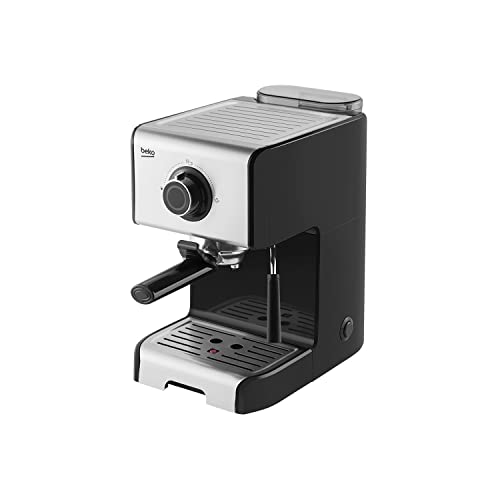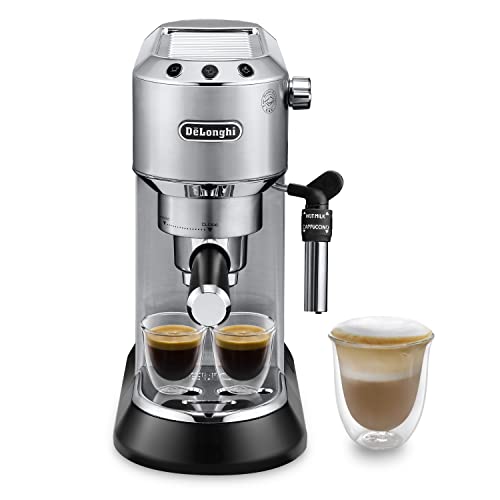10 Best Books On Espresso Coffee Machine
페이지 정보

본문
 How to Properly Maintain and Clean an espresso coffee maker Coffee Machine
How to Properly Maintain and Clean an espresso coffee maker Coffee Machinedual boiler espresso machine machines use pressure to force water through coffee grounds. This type of brewing results in an even stronger drink than drip coffee. The machines require 9 bars of pressure to extract flavor from the coffee grounds.
Espresso machines are available in three primary kinds. They are manual, semiautomatic and fully automated. Semiautomatic machines let you manage grinding, tamping and extraction time. They are a great balance between machine control and human reliability.
Simple to use
The best espresso machines have an intuitive interface. They have an adjustable thermostat that maintains water at the right temperature and a pressure pump that raises the amount of water used per shot. The increased pressure makes the grounds dissolve faster and produces a creamy crema that has the right consistency. The machines are equipped with a milk frother that can be used to make commercial espresso machine-based drinks such as lattes and capspuccinos.
The steam-driven machines of the past use an airtight tank to heat water until it reaches boiling point, and then release the pressure into a shot espresso. While they're inexpensive and compact, they can only reach 1-2 bars of pressure, which is less than 9 bars for espresso.
Semi-automatic espresso machines work by introducing hot water through an already-ground, pre-tamped portafilter of beans. The barista handles the extraction process, but they must manually grind, measure, and then tamp down the beans prior to each cup. This machine is more expensive but it is more reliable and stability. Jai from Blank Street Cafe says.
Full-automatic espresso machines completely remove the barista from the coffee making process, which makes them much easier to use than semi-automatic models. The majority of them have built-in grinders which are connected to the portafilter. They automatically grind and dosing the beans and can be adjusted to create different drinks. Certain machines have an automatic milk hopper that can make frothy milk and pour it to you.
Easy to clean
Espresso capsule machine (www.play56.net) machines create a richer fuller-bodied shot using more heat and pressure than drip coffee makers. They also come with a milk-frothing system that lets you to make cappuccinos as well as lattes. They require more care than drip machines, which includes regular cleaning and descaleing. Fortunately most espresso machines are very easy to clean. Some of the models on our list were designed to make cleaning easier.
Most espresso machines come with portsafilters that hold the grounds of coffee during the brewing. Some models also have a group head that is a set of parts that actually extract the coffee. To keep these pieces free of gunk and grit it is recommended to backflush your machine every week. This means cleaning and brushing the portafilter, locking it and running the brew process multiple times. Many coffeehouses backflush their equipment daily however home users need to only do it once per week.
Utilizing soft or filtered water is recommended, since this can reduce the buildup of minerals and cut down on your need to descale. It is important to keep in mind that a moderate amount of water is required for extraction. Too much mineral can overwhelm the flavor. Insufficient amounts can result in weak, salty-tasting coffee. A well-maintained machine will ensure that it will continue to perform well and taste delicious for the duration of time you have it.
Easy to maintain
A coffee machine allows you to prepare a variety of coffee drinks. But, unlike the typical carafe coffee machine espresso maker espresso machine requires a higher level of temperature and pressure to produce the desired results. To achieve this, it must be maintained and cleaned properly. Thankfully, you don't have to be an expert in order to keep your espresso machine running smoothly.
First, you'll need thoroughly clean the group gasket each week. There, the coffee oils can accumulate and create bitter taste in the espresso. To do this, backflush the entire group using a solution of water and espresso machine cleaner. You should also scrub the group's screen including the nooks and espresso capsule machine crevices using a nylon brush or Coffeetool.
The drip tray is essential to be cleaned regularly as it collects all the coffee waste that is left after each brewing cycle. It can also become an ideal breeding ground for mold and bacteria, which can alter the taste of your coffee. Additionally, you'll want to clean the outside of your machine regularly to stop milk and coffee residue from building up.
It is also worth considering a milk system cleaner, which is food-safe and designed to clean all components that come into contact with milk. These products can be found in the majority of grocery stores. They are also easy to use.
Repairs are easy
A coffee or espresso maker is a great appliance for the home or office. However, like any other electrical appliance, it could fail at times. This can be a hassle especially if the buy espresso machines or coffee maker ceases to function. Luckily, most of these problems can be easily fixed. In many cases, these issues are caused by a simple error or poor maintenance.
Make sure the machine has been plugged in and is operating. It is also essential to inspect the water tank for blockages or clogs. If the problem persists it is possible to get in touch with an expert technician.
Coffee and espresso machines may experience a variety of problems that include no power or heating, defective steam wands or an inability to create enough pressure. These issues are typically resolved, but some require more in-depth cleaning and troubleshooting. These tasks must be carried out with extreme care and caution since many parts could be damaged and fragile.
 If you are unsure of what to do to fix your coffee or espresso machine, you should consult with a professional for costly repairs. In addition, you must make sure you use the correct tools and follow the safest procedures when fixing coffee or espresso machines. Also, be aware that some brands require that their espresso or coffee machines be serviced by a certified national repair center.
If you are unsure of what to do to fix your coffee or espresso machine, you should consult with a professional for costly repairs. In addition, you must make sure you use the correct tools and follow the safest procedures when fixing coffee or espresso machines. Also, be aware that some brands require that their espresso or coffee machines be serviced by a certified national repair center.- 이전글The Ultimate Strategy For Image To Base64 25.02.17
- 다음글Four Secrets About Binary To Ascii They're Still Keeping From You 25.02.17
댓글목록
등록된 댓글이 없습니다.

